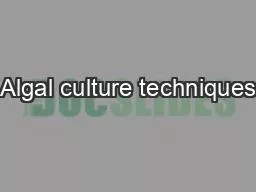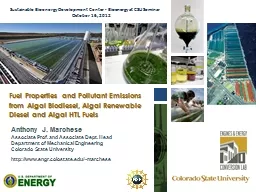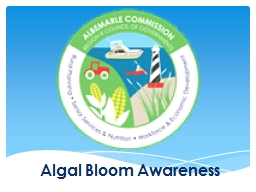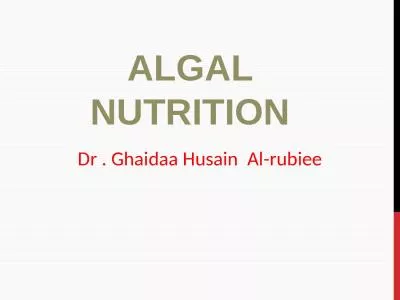PPT-Algal culture techniques
Author : dunchpoi | Published Date : 2020-08-27
The terminology used to describe the type of algal culture include IndoorOutdoor Indoor culture allows control over illumination temperature nutrient level contamination
Presentation Embed Code
Download Presentation
Download Presentation The PPT/PDF document "Algal culture techniques" is the property of its rightful owner. Permission is granted to download and print the materials on this website for personal, non-commercial use only, and to display it on your personal computer provided you do not modify the materials and that you retain all copyright notices contained in the materials. By downloading content from our website, you accept the terms of this agreement.
Algal culture techniques: Transcript
Download Rules Of Document
"Algal culture techniques"The content belongs to its owner. You may download and print it for personal use, without modification, and keep all copyright notices. By downloading, you agree to these terms.
Related Documents














